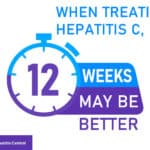Nurses Review Hepatitis C Prevalence and Transmission Routes
Nurses say many may have hepatitis C and not know it
www.milforddailynews.com
By Jennifer Lord/Daily News staff
In their years treating patients at MetroWest Medical Center, nurses Kelly Lindebald and Lynn Dempsey have learned there is no such thing as a typical hepatitis C patient.
Drug users who have shared needles may have it. So might a suburban stay-at-home mom who had a blood transfusion before 1990.
“It’s the most common blood-borne illness in the country – more than 4 million are infected,” said Dempsey, coordinator for the hospital’s hepatitis C clinic.
“And most don’t know,” added Lindebald, the co-coordinator. “There are probably many more people walking around that have absolutely no idea they have it.”
Hepatitis C is a virus that causes inflammation of the liver, leading to chronic liver disease and cirrhosis. It is the most common cause of liver transplants. The virus is transmitted when blood from an infected person enters the body of a person who is not infected, most commonly through sharing drug needles, needle sticks in health workers or from mother to child during childbirth.
Some patients may have contracted hepatitis C by getting a tattoo or a body piercing under non-hygenic conditions or even sharing a razor or toothbrush with an infected person. Sexual transmission is also possible but considered rare.
“About 10 percent of the population doesn’t even know how they got it,” Lindebald said. “They’re starting to suspect snorting drugs may be a risk factor as well. Anything that can transfer blood-to-blood.”
To help determine who might be infected with hepatitis C, the hospital is offering free testing tomorrow beginning at 2:30 p.m. as part of an all-day hepatitis C awareness event. The test requires a simple blood draw and results will be sent to patients’ primary care doctors or the hospital’s clinic if the patient does not have a main doctor.
“A lot of people don’t find out (they have it) until they give blood and get a letter in the mail,” Lindebald said. “It’s a horrible way to find out.”
Symptoms typically don’t appear until 10 to 20 years after infection and about 80 percent never have signs or symptoms. Some symptoms may include jaundice, fatigue, dark urine, abdominal pain, loss of appetite and nausea.
Unlike hepatitis A and B, there is no vaccine against hepatitis C and it is considered incurable, although treatment with interferon and ribavirin can bring the viral load down to an undetectable level, Dempsey said.
The number of new infections each year declined from an average of 240,000 in the 1980s to about 26,000 in 2004, the latest year for which statistics are available. The number of hepatitis C-related deaths could increase to 38,000 a year by 2010, surpassing annual HIV/AIDS deaths, according to the U.S. Centers for Disease Control and Prevention.
While the typical patient is over the age of 40, figures released recently by the state Department of Public Health found hepatitis C cases on the upswing among 15- to 25-year-olds, rising from 254 in 2001 to 784 in 2005. The jump was attributed to an increase in young people experimenting with injectable drugs.
“It’s important to say it’s not passed on by casual contact,” Dempsey said. “Hepatitis C carries the same kind of stigma as HIV – in fact, hepatitis C and HIV often go hand-in-hand.”
(Jennifer Lord may be reached at 508-626-3880 or jlord@cnc.com.)







